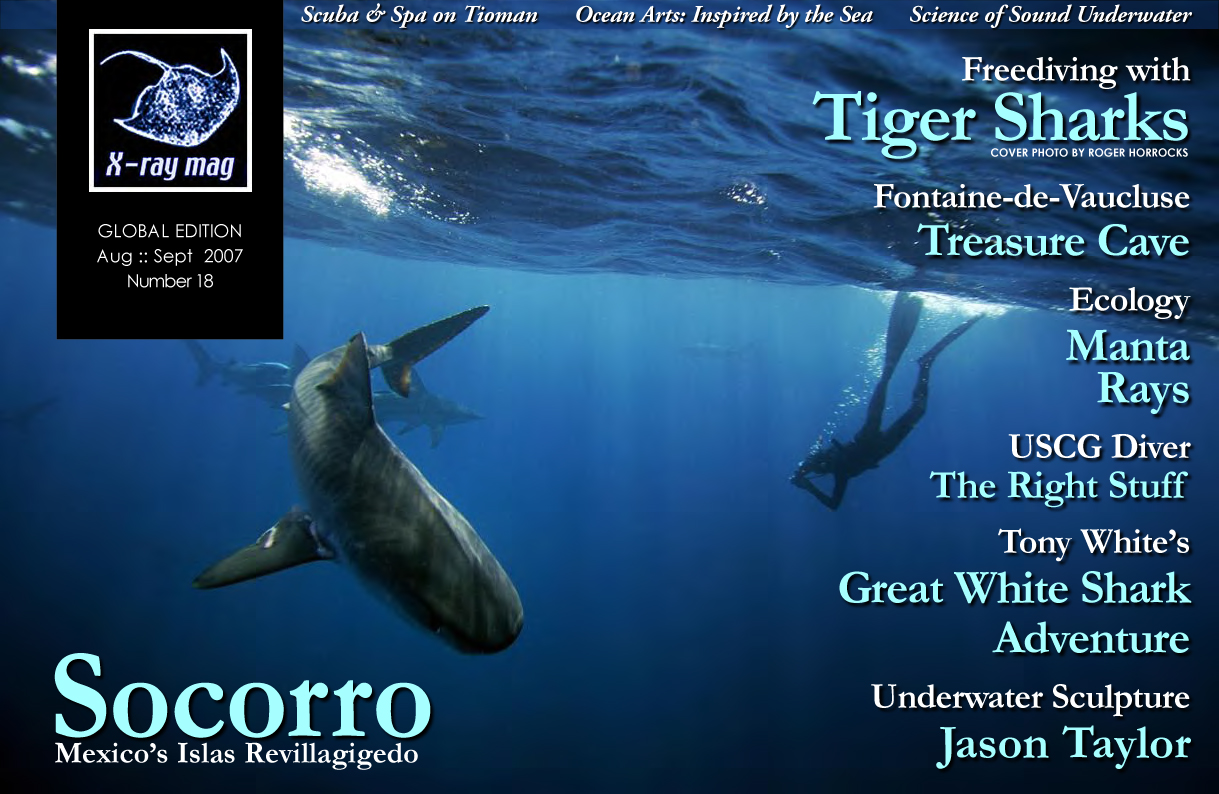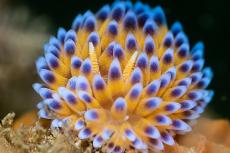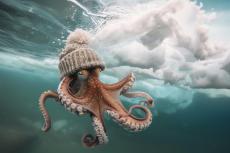The boat’s four occupants were spear fishing for Yellowtail. As Mark began to ask the skipper questions, one of the spear fisherman suddenly appeared to be walking on the water shouting “White, White! Get me out of the water now!”
Mark nonchalantly looked at us and said, “Well, we have found them boys. Let’s go diving!!”
Contributed by
Traditionally during the winter months of May to October, thousands of tourists flock to the local cage diving operators in both Gansbaai and False Bay. From the relative safety of a cage, the tourists watch these marine giants as they feed on one of their favourite dishes, the seals of Dyer and Seal Islands.
During the summer months, the numbers of sharks around these two areas drops significantly. Although the Great White is a migratory animal, up until now, nobody has really known where they disappeared to. When asked, people in the know became very vague and said, “They have gone hunting fish somewhere nearer the coast” or they joke that “It is tourist hunting season”.
It wasn’t just tourists who flocked to these two areas but also cameramen and feature photographers from around the world. Not deterred by the bad visibility or weather conditions they waited patiently for their time to come.
Many had long waits as the conditions were rarely right, and they went away empty handed. Over the years, the professionals found other areas of the world to photograph the Great White for the endless articles and programs that are produced about this fascinating creature.
Almost a year ago, in an effort to attract the reducing number of cameramen back to South Africa, a couple of visionary people decided that somewhere around their beautiful coast there must be better and more predictable conditions to dive with Great Whites.
After completing a trip with a group of photographers to Aliwal Shoals and Sodwana Bay in February 2007, I received an early morning call from Mark Addison of Blue Wilderness Diving. Excitedly, he told me he had just had a phone call from one of his contacts in the Western Cape.
The Agulhas current had taken up its summer position, moving closer to the coast, bringing with it warm and more importantly, clear blue water with 20 to 30 metres visibility. They had also noticed high concentrations of sharks, particularly the Great White and, if I was up for it, we should get down there pronto!
And so it was at 4 o’clock the next morning, with the wagon loaded with cameras, dive gear and a bait stem, that we (Mark, me and videographer Pete Whielden) started the 1600 kilometre drive from Durban to Arniston in the Western Cape.
The journey was long and hot, with Mark and me taking turns to drive and stopping only three times to eat and top up on gas. En route, it became obvious that we would not be able to launch the RIB from Arniston as the launch conditions were too dangerous, and we re-directed to a small fishing village. Struis Bay is some 10 kilometres away from gave us two working days before the weather was predicted to break, with a strong south westerly stopping us dead in our tracks.
The next morning, we were up at the break of day. Adrenaline was pumping. and the weariness of the previous day was forgotten as we anticipated the day and the strong possibility of getting into the water with this awesome marine animal.
We launched the RIB easily from the slip way in the small harbour and headed out into the clear blue sea. Our re-direction from Arniston now meant that we had a 40 kilometre sea journey before us. Our local contacts were sending us to a shallow reef called Skip-Skop, some 4 kilometres from the coast.
The long sea journey gave us time to observe the beautiful rugged coastline and plenty of time to reflect on what was to come. It took us 1½ hours to make the journey with a following swell. Happily, we didn’t know what we were in for on our return Cape Agulhas, the southern most tip of Africa
We arrived exhausted at 10 o’clock that evening, and we still had to prepare all the equipment and load the boat, as time was of the essence. Weather conditions were perfect but predictions only journey!
As we approached the marks in the distance, we could see a small ski boat. Mark decided that we would talk to the people on the boat ....














































